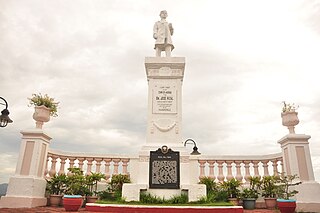San Antonio Buliran | |
|---|---|
| Municipality of San Antonio | |
| Date of Published= April 16, 2017 From top, left to right: Downtown area, Sacred Heart of Jesus Parish Church, Municipal Hall, Maria Amparo K. Dimayuga Park and Library | |
 Map of Quezon with San Antonio highlighted | |
Location within the Philippines | |
| Coordinates: 13°54′N121°18′E / 13.9°N 121.3°E | |
| Country | Philippines |
| Region | Calabarzon |
| Province | Quezon |
| District | 2nd district |
| Founded | October 4, 1957 |
| Named for | St. Anthony of Padua |
| Barangays | 20 (see Barangays) |
| Government | |
| • Type | Sangguniang Bayan |
| • Mayor | Aniano Ariel Wagan Jr. |
| • Vice Mayor | Jennifer H. Murphy |
| • Representative | David C. Suarez |
| • Municipal Council | Members |
| • Electorate | 24,411 voters (2022) |
| Area | |
| • Total | 172.93 km2 (66.77 sq mi) |
| Elevation | 134 m (440 ft) |
| Highest elevation | 985 m (3,232 ft) |
| Lowest elevation | 16 m (52 ft) |
| Population (2020 census) [3] | |
| • Total | 35,891 |
| • Density | 210/km2 (540/sq mi) |
| • Households | 8,251 |
| Demonym | San Antoniohin |
| Economy | |
| • Income class | 4th municipal income class |
| • Poverty incidence | 16.50 |
| • Revenue | ₱ 121.4 million (2020) |
| • Assets | ₱ 362.9 million (2020) |
| • Expenditure | ₱ 100.2 million (2020) |
| • Liabilities | ₱ 138 million (2020) |
| Service provider | |
| • Electricity | Manila Electric Company (Meralco) |
| Time zone | UTC+8 (PST) |
| ZIP code | 4324 |
| PSGC | |
| IDD : area code | +63 (0)42 |
| Native languages | Tagalog |
| Website | www |
San Antonio, officially the Municipality of San Antonio (Tagalog : Bayan ng San Antonio), is a 4th class municipality in the province of Quezon, Philippines. According to the 2020 census, it has a population of 35,891 people. [3]
Contents
- History
- Geography
- Barangays
- Climate
- Demographics
- Economy
- Education
- Preschool
- Elementary
- Secondary
- Tertiary
- Tourism
- Resorts
- Government
- Local government
- Notable personalities
- References
- External links
Located in the westernmost part of the province, it is one of the municipalities that traverses Quezon and Batangas. It has an efficient road system, the National Road linking Tiaong, Quezon and Lipa City through passing Padre Garcia. San Antonio is 45 kilometres (28 mi) from Lucena and 105 kilometres (65 mi) from Manila.
San Antonio is then known as Buliran, one of the progressive and component barangay of Tiaong, Quezon covered with thick cogon grasses and Buri trees. It is situated in the western part of Tiaong, its mother municipality, and bounded on the south by the Municipalities of Padre Garcia and Rosario in Batangas. Its history was known through the knowledge of many of its residents. Considering its abundance and economic opportunity, the place was occupied by the Batangueño from the western part of the barrio and became the pioneers and witnessed the pristine beauty of the place and later in cultivated and tilled its virgin and fertile land. [5]
It produces bottled Sinturis Juice, pasteurized freshly squeezed Philippine orange mixed with sugar, Malagkit Festival with the different kakanin made from malagkit. It also has several resorts and leisure farms that serve as favorite getaways for fun and family get together.
It is composed of 20 barangays, each headed by a barangay captain and seven councilmen duly elected. It is a third-class municipality having total area of 5,400 hectares (13,000 acres).




























